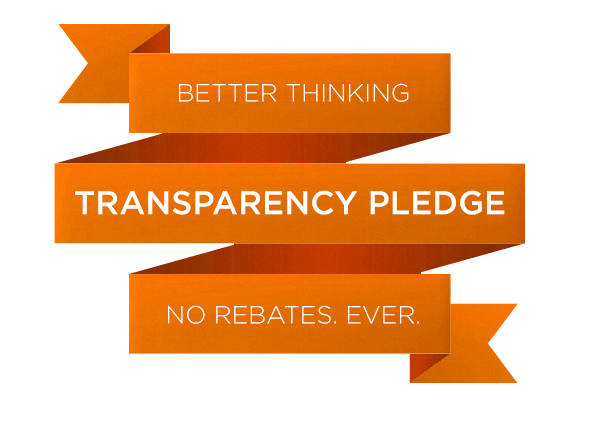Published on
How to Build a Precision Branding Campaign

Charting the path back to performance as marketers emerge from COVID-19
A version of this article was published by the AMA, click here to read it.
CMOs planning campaigns for 2021 know they need to get back in the brand game. After a period of retrenchment—U.S. ad spending fell 13% this year, as marketers hit the brakes during the pandemic—advertising opportunity is back. Retail sales have shifted online, forecast by eMarketer to increase a whopping $108 billion in 2020 over last year’s $601 billion in e-commerce. U.S. consumers are making the most radical shift in shopping behavior in history, now spending one out of every $7 online.
If marketers don’t hit the gas soon, they may be left behind. Which leads to the big question—how much in this environment should marketers invest in brand advertising? And can they do so carefully, with better use of data?
This puzzle has a long legacy. For decades, brand advertising versus direct response (or “DR”) has been an almost religious war among marketers, with gurus picking sides. Some, like Byron Sharp in his brilliant “How Brands Grow,” argue the only way for a company to capture market share is to invest in long-term brand messaging that helps penetrate the millions of consumers now spending elsewhere. Others, like Don Peppers and Martha Rogers, Ph.D. in “The One to One Future,” suggest using data at the individual level is the winning formula.
Fortunately, thanks to recent advances in advertising data, both schools of thought are right—marketers can do branding and direct response concurrently. This new approach is called precision branding.
Precision Branding, A New Approach to Data
At heart, precision branding disrupts the old marketing chessboard in which each media piece, like a queen or a rook, was assumed to play just one role. We’ll begin our explanation by showing you the board, which we call The Information Ecosystem. It’s irreducibly logical: Information can flow either outbound from or inbound to your organization, and information touches few or many constituents. Each resulting corner of this matrix has a simple name: personalization (information sent out to a few), broadcast (in the most expansive term, not just TV, communicating out to the many), engagement (pulling information in from a few) or research (information coming in from many).

Old-school marketers intuitively map media tactics against this board. The common error is a perception that each media type is confined to a specific role, or here, a corner. Television advertising, for instance, is so connected with one-to-many messaging cast out broadly that it is called “broadcast.” This old view of “media fit” is really a confining view, as if each form of communication were a tool, like a hammer, with one job. And it’s completely wrong.

Moving Beyond Old-Fashioned Media Fit
The gap in this archaic logic, shown above, was that each form of media was perceived as being confined in the data use that supports it. But as smart marketing leaders know, data can be matched to almost any form of media in new and exciting ways. What this empowers is a newfound ability to move media pieces around this chessboard—and to deploy the new concept of precision branding.
At heart, precision branding uses data to find consumers’ “modality” of interest, and then connects that data to larger format “brand” visuals or audios.
Here’s an example: In 2017, our agency Mediassociates was retained to support the Centers for Disease Control in a public awareness effort about the Zika virus. The campaign was challenging, in that for a modest national budget, the CDC sought to educate women who might become pregnant of the dangers of Zika, which can cause birth defects. We modeled consumer mobile travel behaviors, store visits and numerous other data signals that indicated certain people might be considering have a baby soon—and then connected this data to video, audio and high-impact digital ads to “tell the bigger story” about Zika. Pre- and post-exposure studies showed a more than 20% lift in intent to take safety actions.
What’s interesting about this case study—which protected consumer personal information, and instead used proxy behavior to find “modes” of interest—is that data was connected to video, traditionally a brand mass media. We knew that traditional demo-targeting wouldn’t be enough. We had to anticipate what was inside consumers’ minds.
Why Precision Branding Is Important
All of this is vital because direct-response ads, by their very nature, don’t build the gradual awareness that helps a consumer learn if your product or service is truly a fit. Like a hungry teenager raiding the fridge, DR ads yank the communication door open and make a grab—but if you do nothing but DR, soon you’ll run empty.
The power of branding relies on the concept of frequency, discovered in the 1800s by German psychologist Hermann Ebbinghaus. A researcher in memory, Ebbinghaus found that humans are horrible at learning unless we receive a repeated pattern of exposures. He conducted experiments in which he held up cards with nonsensical words, such as AXQR FVOM EIAQ TMXO, and asked participants to try to remember them. One flash of the cards, and everyone failed; but when the cards where shown four or five times in between breaks, suddenly people could rattle off the words.
Learning takes time. Brand media with frequent exposures, and the larger format sound and visuals, help consumers truly understand over time whether you are a fit for them.
How to Build a Precision Branding Campaign
Precision branding is an accelerant of traditional branding because it matches this bigger impact with data on consumer modality—not just demographics. And the tools for this are expanding. Oracle, one of the largest data players in the marketing world, lists more than 100 unique data sources that can be appended to various media communications. And media outlets provide ever-rising innovations, from magazine covers tied to CRM lists to mobile ads matched to television shows via automatic content recognition, publisher and platforms have scores of ways data can be appended to reach consumers’ heightened interest.
Our agency advises all marketing leaders to take three steps to improve their campaign planning.
- Invest in brand advertising media. Avoid the temptation to go solely into direct-response tactics (paid search, social media, hyper-targeted digital display, direct mail) and instead realize Byron Sharp was right—some long-term brand exposure is required to optimize the yield of consumer interest.
- Connect media to data for precision branding. Challenge your teams to connect as much brand advertising as possible to data that goes beyond demographics to real consumer modality. Measure the tally. Is at least 75% of your media plan tied to modality data? That should be the goal.
- Measure precision branding with a series of sensors. Beyond digital last-click data, make certain you have a range of analytical “sensors” monitoring the campaign from different angles. Pre- and post-studies, test-and-control experiments, and statistical regression analysis can all tease out whether brand components are driving results. Don Peppers noted the best campaigns are “learning relationships,” feedback loops in which you learn what consumers want over time and respond.
COVID-19 may have disrupted marketing, but there is a path back. Precision branding connects data to advertising exposition in new ways to break through consumer apathy. Think of it like dating, marketers. Someone out there is looking for a relationship, but they need you to build trust first. Combine branding with precision data on their modality, and they may fall in love.

